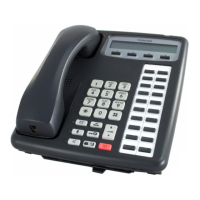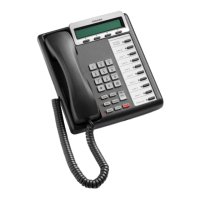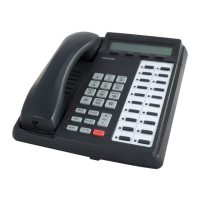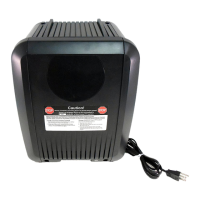Do you have a question about the Toshiba Strata DKT and is the answer not in the manual?
Provides an overview of the IP and digital telephones within the user guide.
Explains the conventions and methods for using the telephone user guide.
Lists other documents and media for additional information on the telephone system.
Familiarizes users with the features of Toshiba Strata IPT2000-series IP telephones.
Provides an overview of the features and models of Toshiba Strata DKT3000/3200-series digital telephones.
Describes the standard function buttons on the telephone dial pad.
Explains the programmable buttons on IPT and DKT telephones for various functions.
Details the information displayed on the telephone's LCD screen and its functions.
Introduces the SoftIPT software phone client and its usage on PCs and Pocket PCs.
Advises users to check system features with their administrator before use.
Explains the three methods for originating calls from IP/digital telephones.
Describes the various methods for answering incoming calls on the telephone.
Explains how to check and retrieve messages indicated by the Msg LED or LCD.
Provides instructions on how to transfer calls to other extensions or voice mail.
Guides users on how to set up and manage conference calls with multiple parties.
Explains the different methods of placing calls on hold (Hold, Exclusive, Automatic, Consultation).
Details how to adjust handset, speaker, and ring tone volumes.
Covers the fundamental operations of the SoftIPT software phone, including making calls.
Defines the prompts and functions of Soft Keys displayed on the telephone LCD.
Details the use of account codes for billing, tracking, and line restriction applications.
Describes the FeatureFlex alarm clock feature for setting reminders and notifications.
Explains how to activate and cancel automatic redial for busy numbers.
Describes setting up automatic callback to be notified when a busy station or line becomes idle.
Explains the two types of call forwarding: System and Station.
Covers features like Busy Override and Do Not Disturb Override for managing calls.
Guides users on making page announcements to telephones and external speakers.
Explains the Speed Dial feature for dialing numbers or feature access codes with shorter codes.
Explains the Uniform Call Distribution (UCD) feature for handling incoming calls.
Explains how to make an emergency call and the function of emergency monitoring stations.
Describes the Fixed, Navigation, flexible, and soft key buttons on the IPT2008-SDL telephone.
Explains the information displayed on the IPT2008-SDL screen when the telephone is idle.
Guides users on accessing and using the directory and speed dial menus on the IPT2008-SDL.
Provides instructions on how to access web applications using the IPT2008-SDL telephone.
Describes how to use Info Manager applications like Stocks, Weather, News, and Calendar on the IPT2008-SDL.
Guides users on accessing and using the directory and speed dial menus on DKT3014/3214-SDL phones.
Details the process of storing names with Personal Speed Dial numbers on the DKT3014/3214-SDL.
Explains how users can customize their Toshiba telephones by programming flexible buttons.
Lists the codes for programming various features onto flexible buttons for one-touch access.
Describes how to use and change One Touch buttons for storing features or dialed numbers.
Lists feature access codes used to activate specific telephone functions.
Explains the meaning of different LED colors and flash rates indicating call status.
Describes the Digital Add-on Module (DADM) and IP Add-on Module (IADM) for expanding telephone capabilities.
Explains the Direct Station Selection (DSS) console for providing additional buttons and features.
Explains how station extensions can be matched to Centrex line extension numbers.
Details accessing Centrex features via pre-programmed flexible buttons.
Describes the automatic repetition of distinctive ring patterns for calls.
Explains the programmable ring delay feature for alternate answering conditions.











